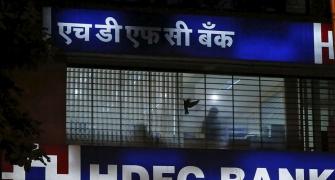Drought Relief Bonds' alias 'Rahat Patras' were introduced on December 1, 1987 to enable the government to fight the unprecedented drought. It is not known whether they helped to fight the drought but they certainly attracted a flood of investors.
After the drought was contained, DRBs were scheduled to go off the counter in February 1988. However, since the instrument had become extremely popular, it was extended and the word drought was deleted.
The interest rate on Relief Bonds was reduced gradually over the years. Then came another name change. FA03 discontinued Relief Bonds and introduced (what was essentially the same instrument) in its new avtaar - Savings Bonds.
These came in two flavours:
- Tax-free bonds with a term of five years. The interest is 6.5 per cent payable half yearly (= 6.61 per cent) on January 1 and July 1.
- Taxable bonds with a term of 6 years. The interest is 8 per cent payable half yearly (= 8.16 per cent) on February 1 and August 1.
Section 80L & TDS
For over a year after its launch, there was no clarity about i) applicability of Section 80L and if indeed applicable, would the extra deduction of Rs 3,000 specially allotted for government securities besides the general deduction of Rs 12,000 be available for these bonds and ii) possibility of the interest suffering TDS and if so, at what rate.
Finally, in a press release dated February 9, 2004, RBI clarified, in the case of taxable Savings Bonds, "in accordance with the provision of Section 80L of the I.T. Act the interest on the Government Securities/bonds will enjoy a tax deduction up to Rs 15,000 p.a."
Government of India, vide Notification F 4 (10) - W&M /2003 dt 13.1.04 declared, "Tax is to be paid by the bond holder as per provisions of the Income Tax Act, 1961 on the interest income earned from investments in 8 per cent Savings (Taxable) Bonds, 2003. However, tax (TDS) will not be deducted at source."
These two are very crucial decision-oriented factors for any meaningful investment planning. After the clarification, the taxable Savings Bonds have become suddenly attractive even for high net worth individuals.
Analysis
In the falling interest rate regime, the 8 per cent bonds were certainly attractive to all those who were not in the tax net. For the taxpayer, the take-home (= after-tax) returns were 7.2 per cent, 6.4 per cent, 5.6 per cent and 5.36 per cent in the 10 per cent, 20 per cent, 30 per cent and 33 per cent tax-zones, respectively.
It is obvious that between the taxable and the tax-free Bonds, the former is better only for the nil and 10 per cent zones. For others, the take-home yield is lower than that of the tax-free bond.
Nevertheless, the taxable bonds are quite useful to all taxpayers up to an interest of Rs 15,000 such that the entire interest would be covered by 80L. That is of course provided no other investment income is already under the shelter of the said section.
For almost all individuals, this space has become largely vacant by virtue of the dividend income from companies and MFs, which were until recently covered by Section 80L, having become tax-free. Now, this vacant space can be best occupied by the taxable version of the Savings Bonds.
Features
- Individuals, may hold the bonds singly or jointly, or on `anyone or survivor' basis or on behalf of a minor as father, mother or legal guardian. HUFs also can subscribe. These are not available to NRIs.
- Investors can opt for either half-yearly or cumulative interest. For the tax-free bond, the cumulative value at maturity is Rs 1,376.90 on a face value of Rs 1,000 and it is Rs. 1,480.25 for the taxable bond.
- The old bonds will continue to enjoy the old rates until their maturity.
- There is no maximum limit on investment in the bonds. Investments can be made in multiples of Rs 1,000.
- The tax-free bonds shall not be transferable except by way of gift to a relative as defined in Section 6 of the Indian Companies Act, 1956, by execution of an appropriate transfer form and execution of an affidavit by the holder. The taxable bonds cannot be gifted.
- The bonds shall not be tradeable in the secondary market and shall not be eligible as collateral for loans from banks, financial institutions and non-banking financial companies (NBFC) etc.
Premature encashment
Tax-free Bonds can be surrendered after a minimum lock-in of three years from the date of issue, any time after the sixth half year but redemption payment will be made on the following interest payment due date.
Thus the effective date of premature encashment will be July 1 and January 1 every year. However, 50 per cent of the interest due and payable for the last six months of the holding period will be recovered in such cases both in respect of cumulative and non-cumulative bonds.
In sum
Since the pure-growth, open-ended, debt-based schemes appear to have possibly outlived their utility, these Savings Bonds have gradually emerged as a good parking place for investible funds for small investors and high net worth individuals.
Even for retired persons, as can be seen from the above table, as much as Rs 812,000 can be invested on a tax-free basis. Considering the interest rates generally available on other fixed income instruments, make hay while the sun shines.







